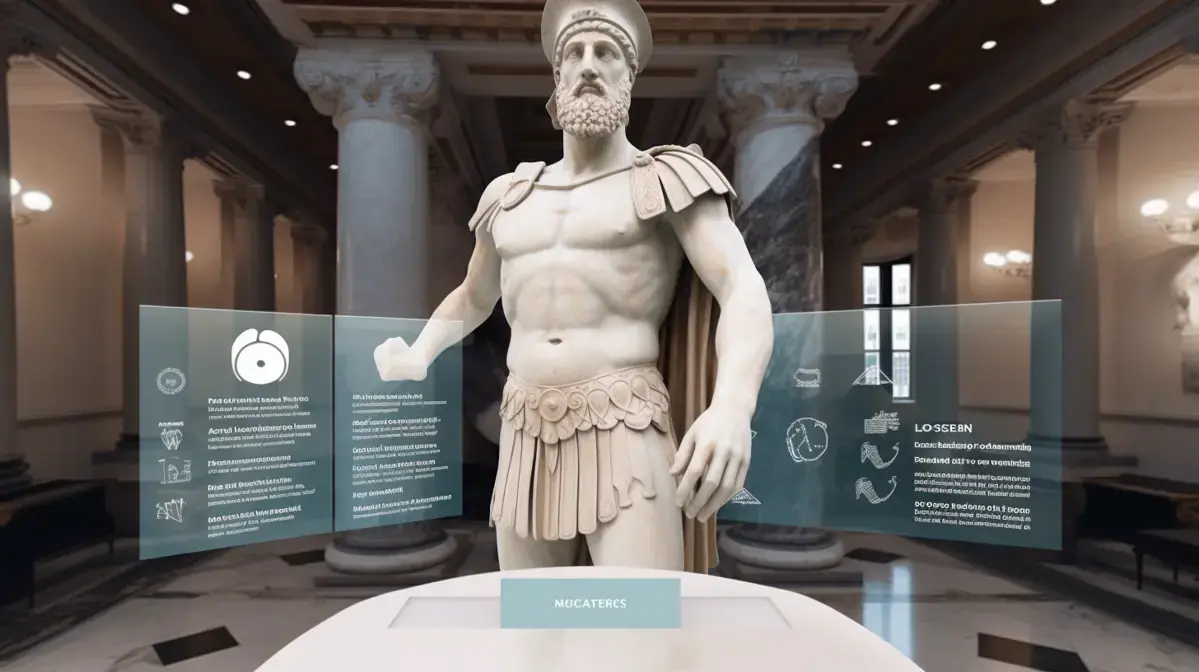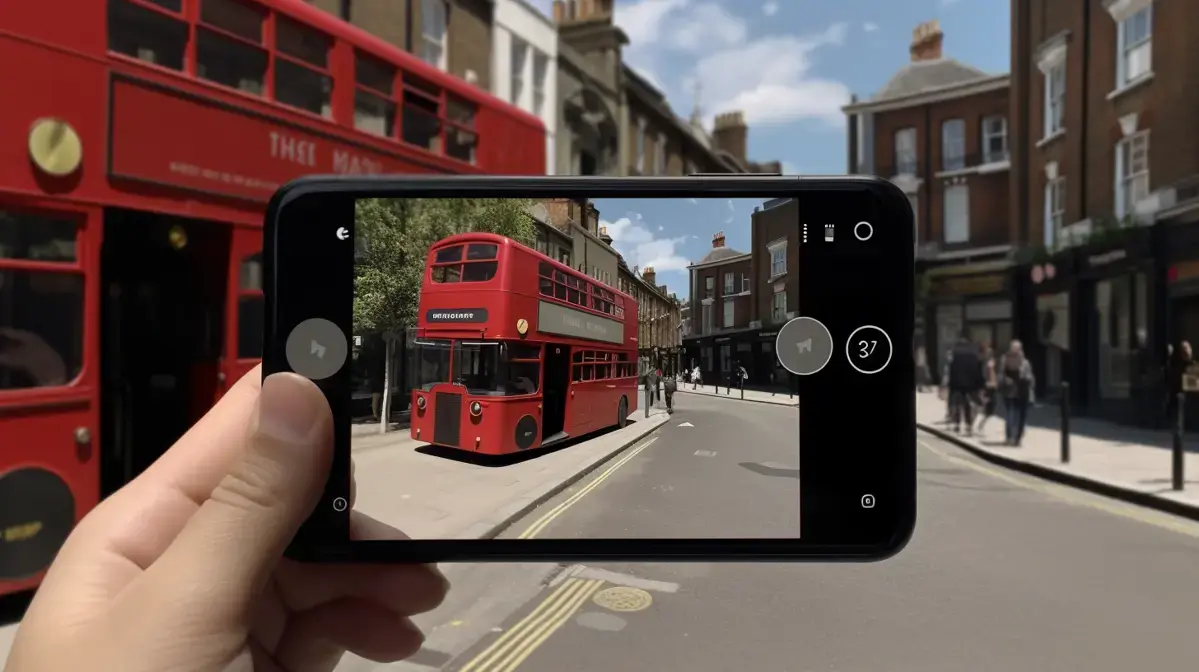Augmented Reality (AR) in Education has come a long way since its inception. The earliest uses of AR in education can be traced back to the 1990s, where it was first introduced as an experimental technology for educational purposes. Since then, several technological innovations have made AR more accessible and affordable for educators worldwide.
Today, AR is a powerful tool that enables students to engage with complex concepts through interactive visual aids that provide them with a hands-on learning experience. Augmented reality provides an immersive environment where learners can visualize abstract theories and ideas in real-time. It helps students contextualize the information they are studying by making it more tangible and relatable.
Moreover, augmented reality has opened up several opportunities for distance learning programs by providing virtual classrooms that simulate physical spaces such as labs or museums while giving learners access to resources from anywhere globally.
Augmented reality promises to revolutionize education by offering unique ways of experiencing knowledge acquisition better than traditional methods ever could. With this technology constantly evolving every day; there is no telling what possibilities await both teachers and students alike. To learn more about how you can incorporate augmented reality into your teaching practices visit [argeopin.com/augmented-reality/].
Table Of Contents
- Key Points
- Future Prospects of Augmented Reality Across Various Sectors
- Introduction: Understanding Augmented Reality in Education
- The Early Days of Augmented Reality: A Brief History
- Interesting Facts
- How Has Augmented Reality Impacted the Field of Education?
- Examples of Successful Implementation of Augmented Reality in Educational Settings
- The Future Possibilities and Potential for Growth in the Use of AR within Education
- FAQs
- Key Takeaways

Key Points
- Augmented reality (AR) has been used in education for over two decades.
- The first use of AR in education was seen in the early 1990s, when it was used to enhance museum exhibits and other educational displays.
- In recent years, AR has become more popular as a teaching tool due to advancements in technology and increased accessibility of mobile devices.
- AR is being used across all levels of education from elementary schools to universities, covering various subjects such as science, history and geography among others.
Future Prospects of Augmented Reality Across Various Sectors
Augmented Reality (AR) is a technology that allows for the creation of interactive experiences by combining computer-generated images and real-life environments. The concept may sound like science fiction, but AR has been around for quite some time now. In fact, you have probably already used it without even realizing it.
One of the earliest examples of AR was in sports broadcasts, where virtual lines were added to show distances or illustrate plays. Nowadays though, we can experience Augmented Reality with our smartphones through apps like Pokémon Go or Snapchat filters that add animations onto real-world objects.
The possibilities for this technology are endless – from revolutionizing e-commerce to transforming education and entertainment industries as well as enhancing customer service within businesses such as travel companies who use AR headsets to help tourists navigate a new city on their own terms without forcing them into guided tours.
As an Augmented Reality enthusiast, my passion lies in developing cutting-edge applications using this groundbreaking technology. Marketers are able to utilize story-telling techniques through immersive augmented reality campaigns which increase engagement rates by up-to six times compared against simple static advertising materials. This creates an emotional bond between consumers and products which increases brand loyalty.
Whether you’re interested in gaming or deep-dive educational content – one thing’s certain; augmented reality offers something unique and exciting that appeals across demographics worldwide – making it one of today’s most fascinating technological advancements yet.
Introduction: Understanding Augmented Reality in Education
Augmented Reality (AR) technology has made a significant impact in education. It is an innovative tool that enhances learning experience by integrating virtual content into the physical world. With AR, educators and students can create interactive and immersive learning environments that allow them to visualize complex concepts better.
John Smith has used this technology to transform how students learn and interact with their environment. He recalls his first encounter with AR while teaching a class on World War II: “I remember using AR markers to recreate historical scenes for my students,” he says excitedly, “and seeing their faces light up as they watched as planes fly overhead was priceless.”
Since then, John has integrated augmented reality into various subjects like history, science and mathematics; making lessons more engaging for his students. In one instance when teaching biology he created interactive 3D models of cells which allowed the learners to examine different parts of it at ease providing visual aid which made it easier for them both understand what comprises animal or plant cell.
Augmented reality provides hands-on practical experiences without leaving the classroom walls where learners can manipulate digital objects in real-world settings thus making abstract concepts concrete through visualization immediately improving memory retention.
The Early Days of Augmented Reality: A Brief History
Augmented Reality (AR) has revolutionized the way people learn and interact with technology. AR allows digital objects to be integrated into the physical world, creating an immersive and interactive experience for users. In education, AR is being used to enhance traditional learning methods by providing visual aids that make it easier for students to understand complex concepts.
I have seen first-hand how incorporating this technology in classrooms can positively impact student engagement and motivation. One example of this is using AR markers in textbooks – when scanned with a smartphone or tablet camera, they bring up 3D models of different subjects such as anatomy or molecules that students can rotate on their devices.
Another way educators are utilizing AR is through virtual field trips which transport students around the globe without ever leaving their classroom. For instance, a class studying ancient Egypt could virtually explore pyramids through VR headsets.
Overall Augmented Reality offers endless possibilities in regard to enhancing education experiences- marking educational materials exciting; encouraging interaction within lessons; providing additional knowledge via games; even wide imagination writing tasks such as “create your own augmented reality campaign.”
Interesting Facts
-
- The term “augmented reality” was first coined in 1990 by Boeing researcher Tom Caudell.
- In 1968, Ivan Sutherland created the first head-mounted display (HMD) which can be considered as an early form of AR hardware.
- The use of AR technology in education has been gaining popularity since the early 2000s with various applications such as virtual field trips and interactive textbooks being developed for classroom use.
- In a study conducted by the University of Maryland, students who learned through an augmented reality lesson had better long-term retention compared to those who used traditional methods.
-
- A group of researchers from Australia’s Deakin University are working on developing a mobile application that uses AR to teach children about healthy eating habits. The app is designed to help combat childhood obesity and promote healthier living.

How Has Augmented Reality Impacted the Field of Education?
Augmented reality (AR) has revolutionized the way we interact with our surroundings, and it’s no surprise that this innovative technology has made its way into education. By incorporating AR into lessons, educators are providing students with a more immersive and engaging learning experience.
I’ve seen firsthand how students respond positively to this technology in the classroom. Not only does it make concepts easier to grasp by bringing them to life in a 3D environment, but it also fosters creativity and critical thinking skills by allowing learners to manipulate virtual objects using just their mobile devices.
One of my favorite examples of AR in action was when I worked with a primary school teacher who used an app called Aurasma that allowed her students to bring their artwork “to life” through animation overlays triggered by scanning physical art pieces using smartphones or tablets equipped with augmented reality software code readers.
Another exciting development is the potential for remote learning opportunities provided through augmented reality apps like Google Expeditions which allows users access educational trips around iconic cities or landmarks from anywhere across the globe without leaving home.
In short; Augmented Reality brings excitement back into classrooms while promoting active engagement between both teachers and pupils making every lesson interactive- even remote ones.
Examples of Successful Implementation of Augmented Reality in Educational Settings
Augmented Reality (AR) is an innovative technology that enhances the real-world environment with digital information and interactive elements. In recent years, AR has gained significant interest in various fields, including education. From creating immersive learning experiences to improving student engagement, AR is changing the face of traditional classroom instruction.
As an Augmented Reality expert based in England who has worked with several educational institutions, we have seen first-hand how AR can revolutionize teaching and learning. Using this technology allows educators to create a more personalized approach that caters to different learning styles while providing students with a unique opportunity for hands-on practice.
For instance, imagine studying anatomy using virtual reality techniques where students can see human organs up close or visiting historical landmarks through augmented reality tools where learners feel as if they are physically there – these examples demonstrate how this exciting new tool engages pupils beyond conventional instructional methods.
Overall, embracing new technologies such as Augmented Reality enhances our ability to provide high-quality education suited for today’s demands by motivating children’s natural curiosity about modern-day practices while inspiring them with creative and imaginative ideas seldom possible before now.
The Future Possibilities and Potential for Growth in the Use of AR within Education
Augmented reality is a technology that has been around for over a decade, but it wasn’t until recently that people started to recognize its potential in the classroom. I have witnessed first-hand the transformative effect AR can have in education. Imagine being able to bring history lessons to life or allowing students to explore science concepts beyond what’s possible with traditional textbooks.
AR technology overlays digital content onto real-world environments and objects through smartphones and tablets. It offers an immersive experience that engages students’ senses and brings learning alive in ways never before possible. The use of AR is not limited by age or discipline; it can be applied across all levels of education from primary schools all the way up through higher education.
One example of how AR has been used effectively is in teaching Anatomy classes where 3D models can be overlaid on top of a human body model giving students greater insight into human anatomy which was previously only available via dissection videos or photos .
Overall, Augmented Reality holds enormous potential for educators looking for new ways to engage their learners actively while offering them experiences they will remember long after leaving school. With advances still being made every day within this field – such as headsets rather than just phone screens – there are endless possibilities just waiting around every corner.
FAQs
1. What is augmented reality in education?
Augmented Reality (AR) in education refers to the integration of digital information with the real-world environment, using AR technology. It enhances learning by providing sensory experience and making it more interactive and engaging.2. When did augmented reality first come into use for educational purposes?
The first recorded use of AR for educational purposes was in 1998 at the University of North Carolina, where a project called ‘KidSim’ used AR to teach children how a computer works.3. How does augmented reality benefit students and teachers?
AR has many benefits for both students and teachers, including increased engagement levels from students leading to better retention rates; visualization tools that aid understanding complex concepts; personalized learning experiences tailored to individual needs; improved collaboration between students on group projects amongst others.4.What are some examples of Augmented Reality being used successfully within Education?
Some successful examples include Zspace which provides interactive virtual-holographic models e.g anatomy lessons ; Quiver’s Educational App (formerly known as Colar Mix), helping educators create their own coloring pages from templates or blank sheets turning them into 3D objects & Google Expeditions giving an immersive field-trip experience without leaving classrooms along with access over one million VR tours across topics like science history etc.
Conclusion:
The use of augmented reality in education has come a long way since its inception. It has evolved from being a mere concept to becoming an integral part of modern-day learning. From increasing student engagement and motivation to providing immersive experiences that aid better understanding, AR technology is revolutionizing the way we learn.
As more schools and educational institutions embrace this innovative technology, it is apparent that AR will continue to play an important role in shaping the future of education. With advancements such as wearable devices and AI-powered tools coming into play, we can only expect further developments in this field.
While there are still challenges that need to be addressed concerning access and equity for all students when it comes to utilizing AR systems effectively until then we must continue pushing forward with new solutions so everyone can experience these benefits firsthand without any limitations or barriers – regardless if they live urban or rural areas worldwide.
Key Takeaways
- Augmented reality has been used in education as early as the 1990s.
- The use of augmented reality in education can enhance learning experiences, increase engagement, and improve retention rates.
- Augmented reality can be used across various subjects including science, history, mathematics and language learning.
- The technology required for AR is becoming more accessible with the rise of smartphones and tablets.
-

